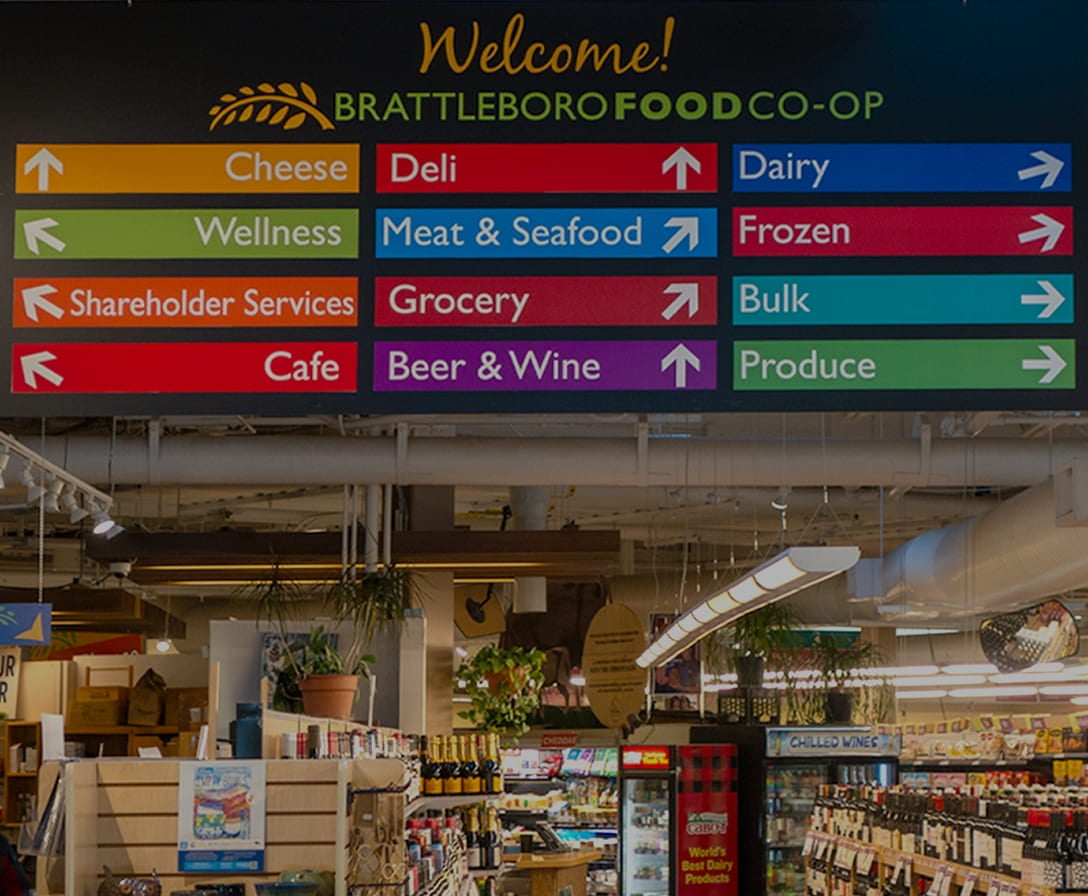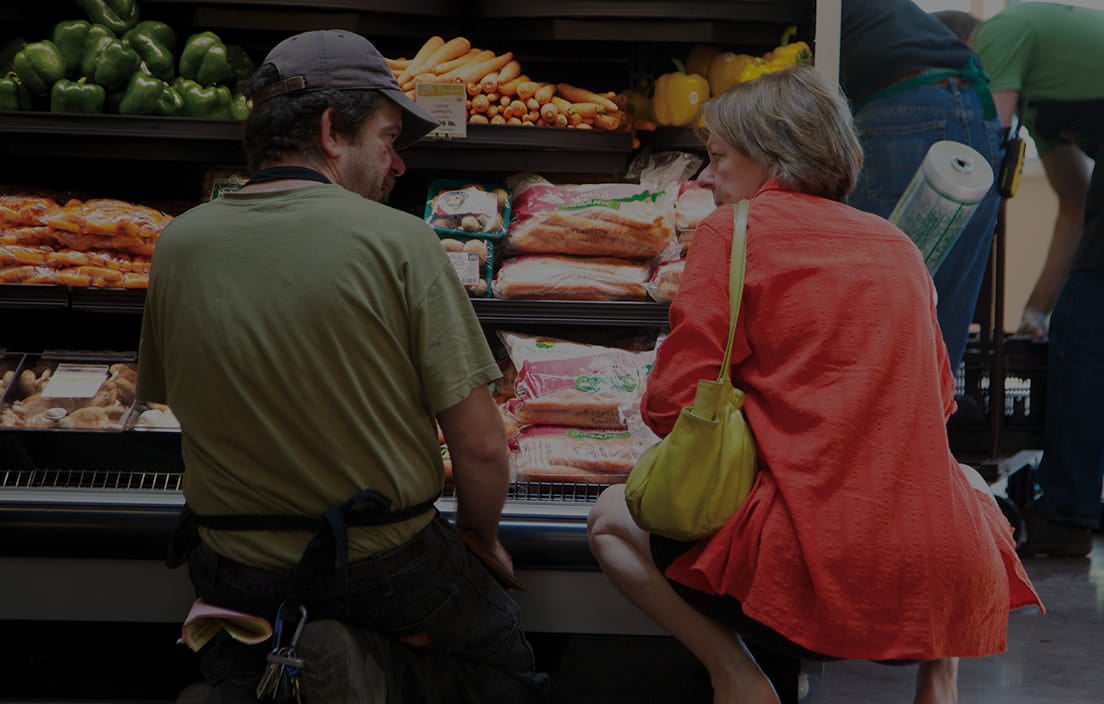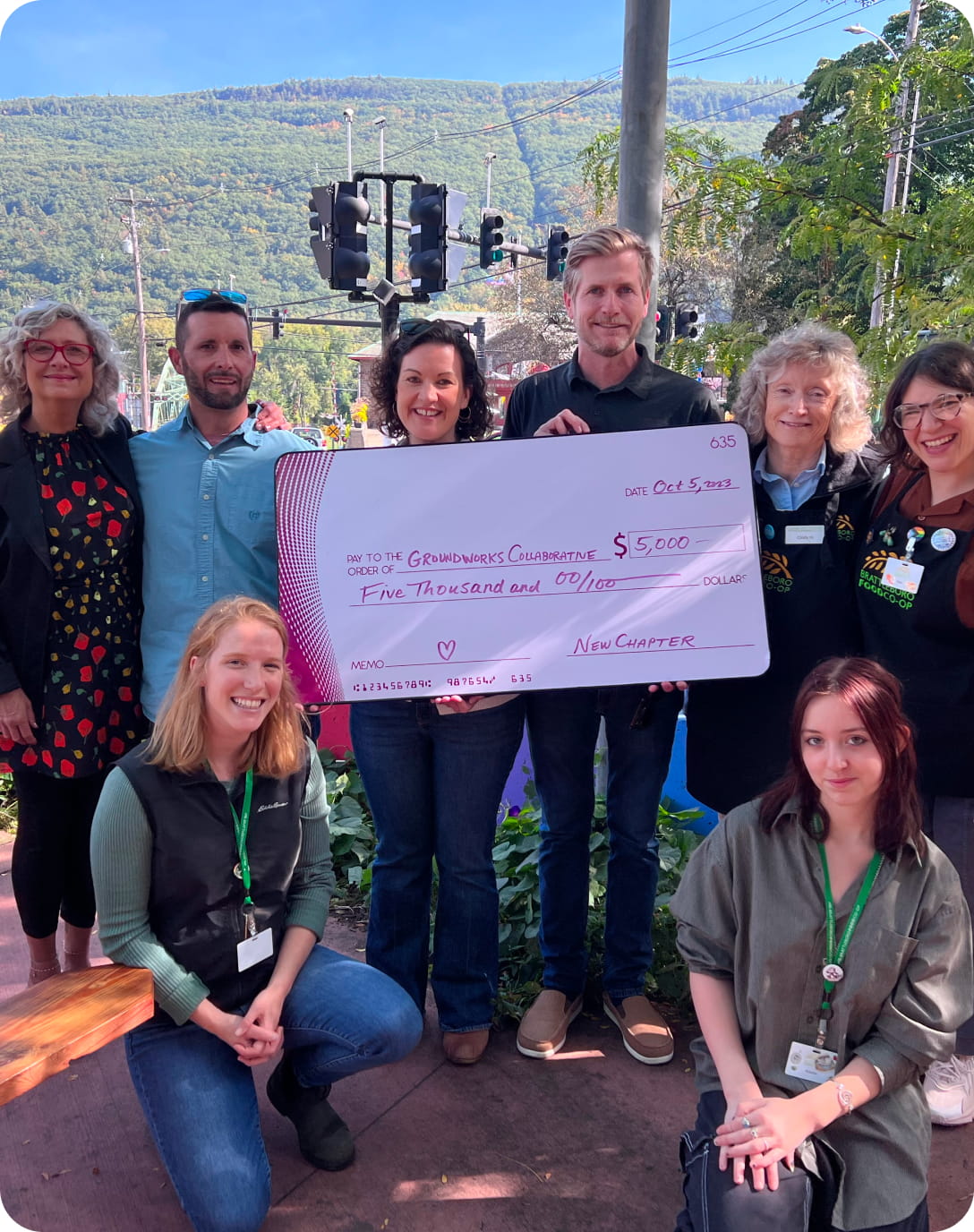Pete’s Greens
Pete Johnson first identified his love for farming when he grew and sold pumpkins as a child with his siblings in the Pacific Northwest. The pumpkins were gorgeous and it was a financially successful business. Flash forward to the mid-1990s, when Pete Johnson was about to graduate from Middlebury College and, for his senior thesis, he built a solar greenhouse on campus. This project was the result of his fascination with winter growing and the idea that plastic or glass structures could positively impact the growth of vegetables in the extreme winter temperatures of Vermont. Post-graduation, he moved back in with his parents and began to focus his time on growing salad greens year round. He launched Pete’s Greens and for the next four years he primarily focused on growing and selling salad greens. He built a huge homemade cedar greenhouse called the loghouse which is still used today in some growing scenarios. To expand the business beyond greens, he knew that he had to grow a more diverse crop selection. In order to expand, land acquisition was mandatory, and he was lucky enough to rent 10 acres of land from a sheep farm. From that point forward, Pete’s Greens growth was tremendous, with a continuous rotation of purchasing and/or leasing to grow new crops. In 2003 they purchased a 190-acre farm in Craftsbury Village, VT, with growth continuing until 2011, when they experienced a massive barn fire that resulted in a loss of stored crops and meat as well as a halt to operations. As the northern Vermont community heard of this news, they rallied around Pete’s Greens to support fundraising for the rebuild. The fire was a blessing in many ways, as it allowed for new greenhouses, equipment, buildings, as well as washing and storage facilities, among other farm amenities. Today Pete is still running 90 miles an hour to get all the crops in the ground—all while being the owner of the farm and overseeing much of the operation. Crops currently range from root vegetables to salad greens to black garlic to meat to fruit and many other amazing offerings.
Pete’s Greens is a four-season organic farm that sells their offerings at farmers markets, farm stands, restaurants, grocery stores, and co-ops, as well as through a robust CSA program. They take pride in collaboration with other farms and local producers. From cheese producers to other fruit and vegetable farms, they find that their economy and community is stronger by working together. Their robust wholesale program sells all sorts of vegetables and fruit to grocery stores, co-ops, and restaurants around Vermont, Massachusetts, New York, and Rhode Island—although the majority of their food stays right here in Vermont, and they are quite proud that co-ops are their core supporters. During the pandemic many of their co-ops, restaurants, and grocery stores sold far less produce than in the past, the result of many of these businesses not having salad bars open. The good news during the pandemic was that Pete’s Greens Good Eats CSA grew, as many folks felt safer and enjoyed the convenience of directly supporting a local farm. In addition to their core CSA, they have recently been offering the ability to add-on to the Good Eats CSA with meat, cheese, and pantry items—all from other local businesses and farms.
In farming, there are many ways to minimize the impact on crops of weeds, disease, and pests in order to maintain an excellent yield. For many farms it entails conventional or organic methods of spraying. The whole team at Pete’s Greens truly believe they can work to avoid such methods through crop rotation. Their team of approximately 30 people at peak season work passionately to ensure proper planting, crop rotation, cultivation, and harvesting to maximize yield and maintain soil health. While crop rotation is commonly practiced in the farming world, it is not always fully utilized. Pete’s Greens learned after a few years of growing that it would be a big ally as their farmable land improved, all while customer demand increased. By having extra fields for growing cover crops such as winter rye, pea oats, clover, and buckwheat, they can hold their soil in place—all while replenishing nutrients before another main vegetable crop is grown. The variety of cover crop planted is completely dependent on the time of year and what crop may be planted next. In addition, they spread homegrown compost on their fields to maintain and improve soil health. Practicing soil-based organic farming practices is part of their mission and they have naturally become supporters of the Real Organic Project. The Real Organic Project was started by farmers to protect the meaning of organic and to set standards for growing in soil not hydroponically.
Pete’s Greens centers their work on the community. This starts with their partnership with NOFA-VT’s Farm Share Program. This program assists limited-income Vermonters in obtaining fresh organic fruits and vegetables. The program brings a season of local farm products to individuals and families who may not be able to afford to purchase fresh food. Farm Share participants pay only 50% of the share price from Community Supported Agriculture (CSA) farms, including Pete’s Greens. Another way in which they are committed to the community is that, following their barn fire, Pete’s Greens helped to start the Vermont Farm Fund (a program of The Center for an Agricultural Economy). This program offers no-hassle, friendly loans to local farmers and food producers. This is a true revolving-loan fund—as the community of recipients pays back their loans, funds are replenished for the next cycle of borrowers. The intent with this loan program is to support farmers who may have been struck by disaster, or a new business that has a great idea to increase their efficiency or create a new product, in addition to simply requiring investment to grow. The Vermont Farm Fund was designed to make borrowing as easy as possible and has provided over two million dollars in loans.
What does the future hold for Pete’s Greens? They want to be a disruptor in the farm industry by reimagining what is possible with a CSA. In particular they are working to launch a home delivery / subscription service in the form of a traditional CSA, complete with prep instructions and recipes. By supplementing their farm grown fresh fruits and vegetables with add-ons such as cheese, meat, and pantry items, they believe the value of their CSA would be compelling for folks in the region. In addition, they recently invested in new washable boxes and reusable ice packs that can be easily cleaned and will hold all CSA items without the use of plastic. This same plastic-free approach is something they would like to bring to their wholesale program, and they hope this innovation may become available soon. In the meantime, they are implementing new bags for their salad greens to implement longer shelf life. Overall innovation is at the forefront of what they do on the farm each and every year. For instance, this year they have installed a homemade rudimentary computer system on some tractors. Technology of this capacity is commonplace on very large farms and they have taken it and modified it to their scale. This system utilizes GPS to improve cultivation and timing around the weeding of fields. They believe that their root crop will benefit from this tremendously. Pete’s Greens is a proud member of the Vermont community and we welcome you to try their vegetables throughout August and beyond. Currently many bagged greens and black garlic are available to purchase, with many root vegetables that will be available during the winter season.
By Jon Megas-Russell
About Producer of The Month

Shop Online

On Sale Now!

